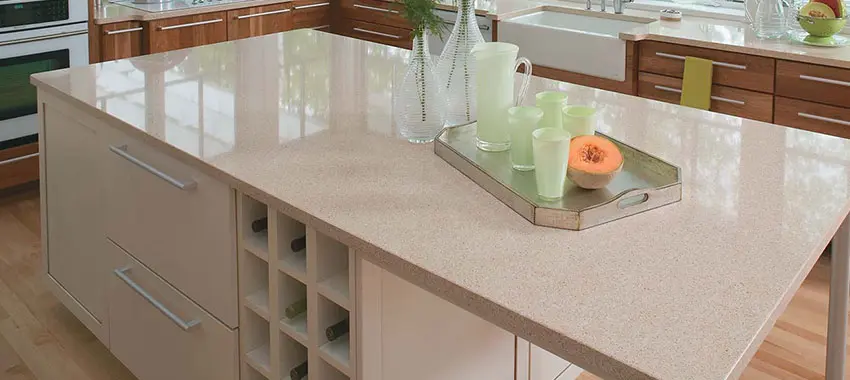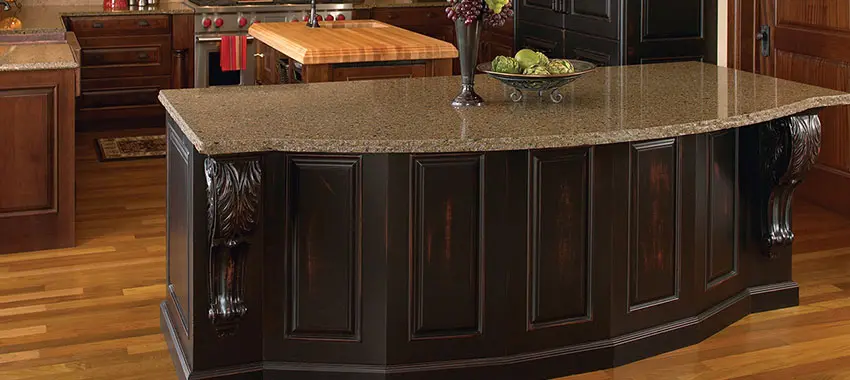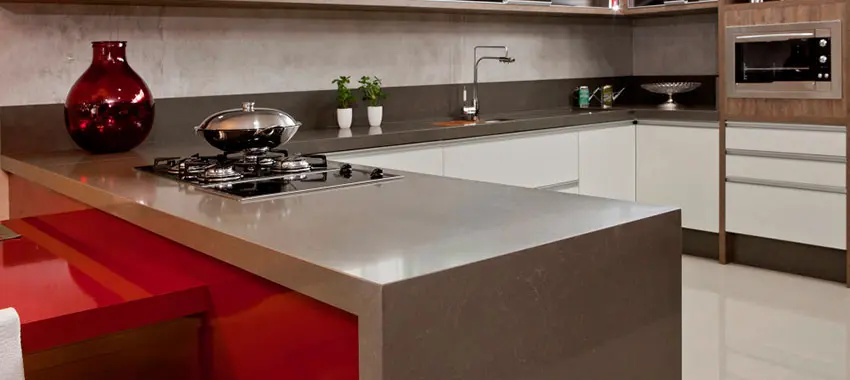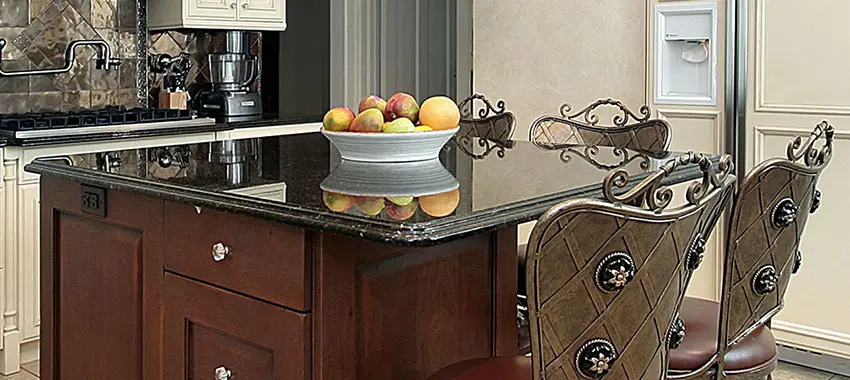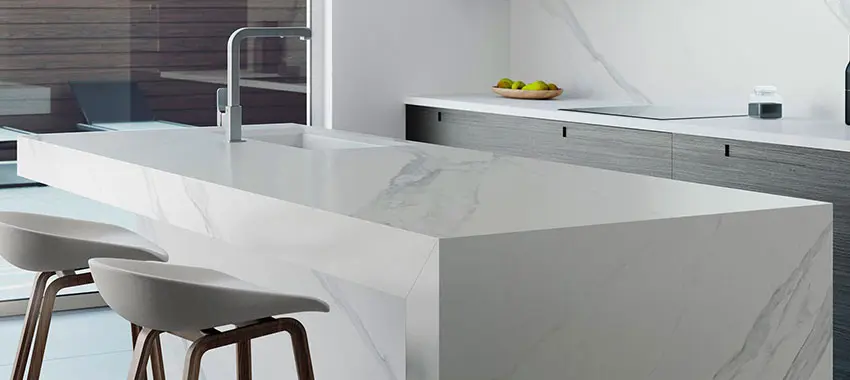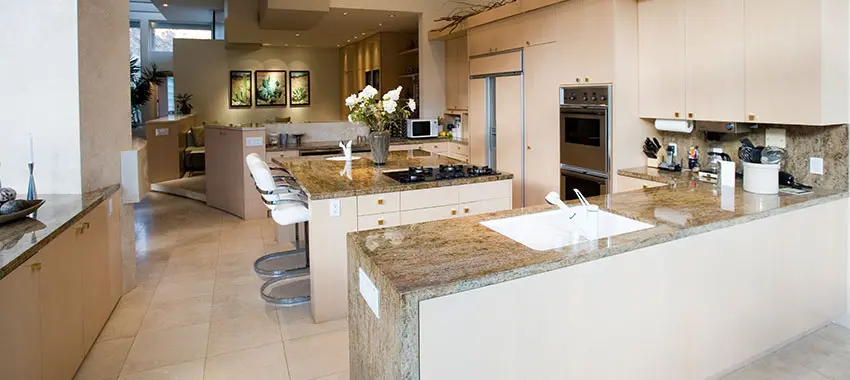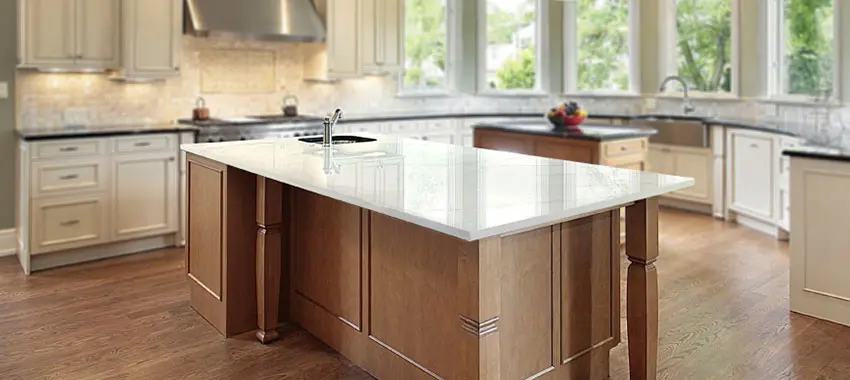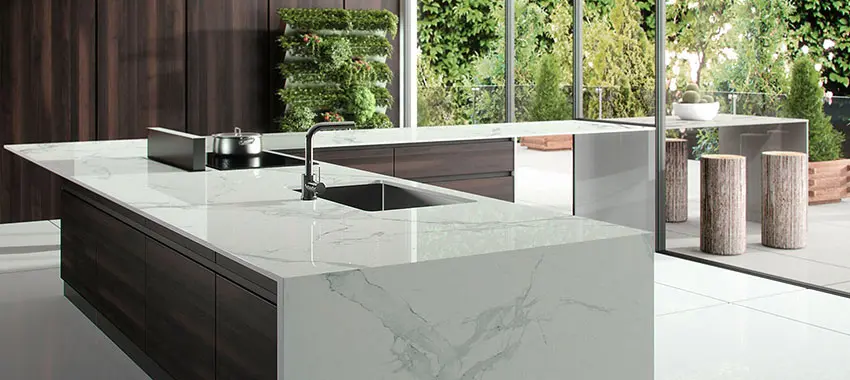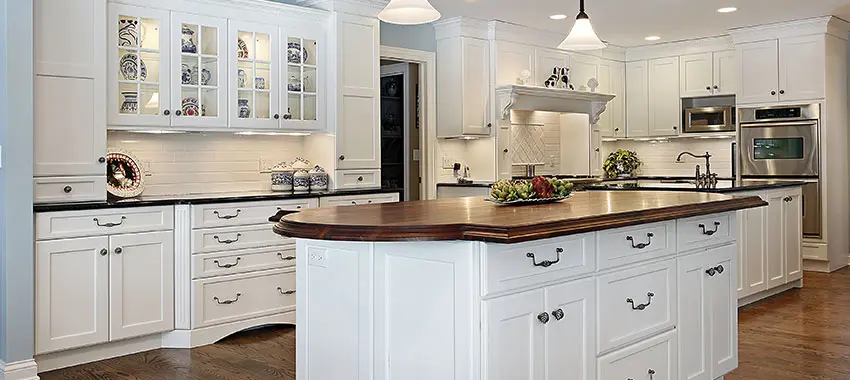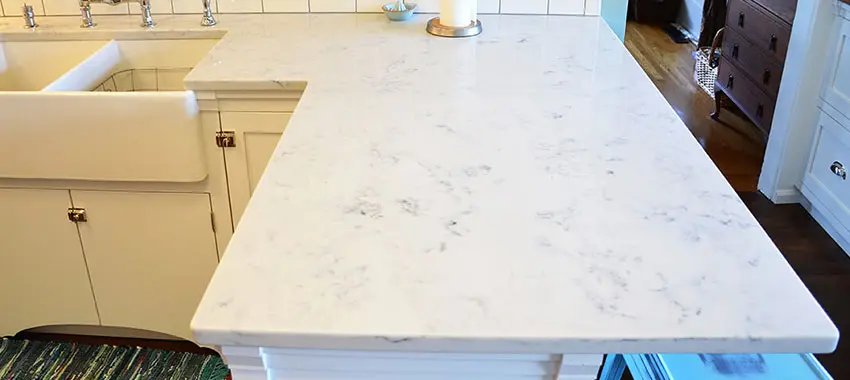Jan
7 Excellent Kitchen Countertop Cover-Ups
Don’t like the current look of your countertops? Don’t rush to hire countertop replacement services providers, as there are several ways you can cover your countertops without requiring contractor services. To help you out, here 7 excellent kitchen countertop cover-ups:
Tile the countertops
Tiles are excellent at covering floors, walls, and showers, and there is no reason you shouldn’t use them to cover up your old countertops. When choosing the tiles, go for glazed ceramic and porcelain tiles as they are the most stain and heat resistant.
They also come in a wide range of sizes, shapes, and colors. Avoid natural stone tile as it requires periodic sealing that can be too much work on your part.
You can install the tiles directly on your countertops without removing the old countertops. You only need to ensure the tiles are flat and stable enough to prevent the new tiles from cracking.
As you are installing the tiles, you should note that while tiles are durable and easy to maintain, the grout joints are prone to staining. To minimize the stains, seal the countertops as soon as possible after installing the tile. You should then apply the sealer every few years to maintain the protective barrier.
Lay laminate over the countertops
If you have old laminate countertops with square edges, you can cover them with a new laminate layer. The layers are sold in sheets of up to 5 feet wide and 12 feet long, and all you need to do is to visit your local store and place your order.
If your countertops have raised and rounded edges, often known as waterfall edges, you can’t cover them with new laminate surfaces as the new material can’t conform to the edge contours.
Use a countertop refinishing kit.
Refinishing kits have everything you need to cover your countertops. The refinishing kits include an epoxy-like paint and decorative stone chips that create the natural stone look.
To cover your countertops using the kit, you simply need to follow the kit’s instructions. While this method is highly effective, you should note that it involves a lot of hard work, it’s messy, and you need to pay close attention to the kit’s details.
Cover your countertops with wood
Have you always wanted butcher block, or are you drawn to the beauty of real wood countertops? You can cover your old, beaten countertops with wide planks of solid hardwood. You can even get creative and use a blend of hardwood and bamboo plywood.
The cool thing with hardwood is it’s more durable and repairable than plywood. Only plywood comes in larger pieces and is more affordable.
Bamboo plywood offers the best of both worlds. It has a thicker top layer that ensures it’s durable and easy to repair and at the same time comes in 4 x 8-foot sheets like regular plywood.
You should note that covering your countertops with hardwood requires woodworking skills and the right tools. You can do the work by yourself if you have the skills or hire a professional to help you out.
Install modular granite
Also known as granite or stone overlay, modular granite is a system of small thin stone slabs designed to cover old countertops. The stones are 16 by 18 inches wide, which means there are fewer joints between the pieces.
For the problematic inside and outside corners, there are special pieces made for these sections, as well as the optional edge pieces.
Cover the countertops with film
Countertop film is thicker than shelf or contact paper. Many people refer to it as a cross between vinyl flooring and shelf paper and have a self-adhesive backing for sticking directly to the old countertop surface.
To install the film, layout the film, trim it to a rough size, and align it to the countertop edges. You should then stick it down using a squeegee tool to remove the air bubbles.
While the film will cover your ugly surfaces, you should note that it’s not a long-term solution, so use it as a temporary way of covering your surfaces.
Paint the countertops
Painting your countertops is easy, fast, and gives you immediate results. You can also do it by yourself without involving granite contractors Rockville or other professionals.


